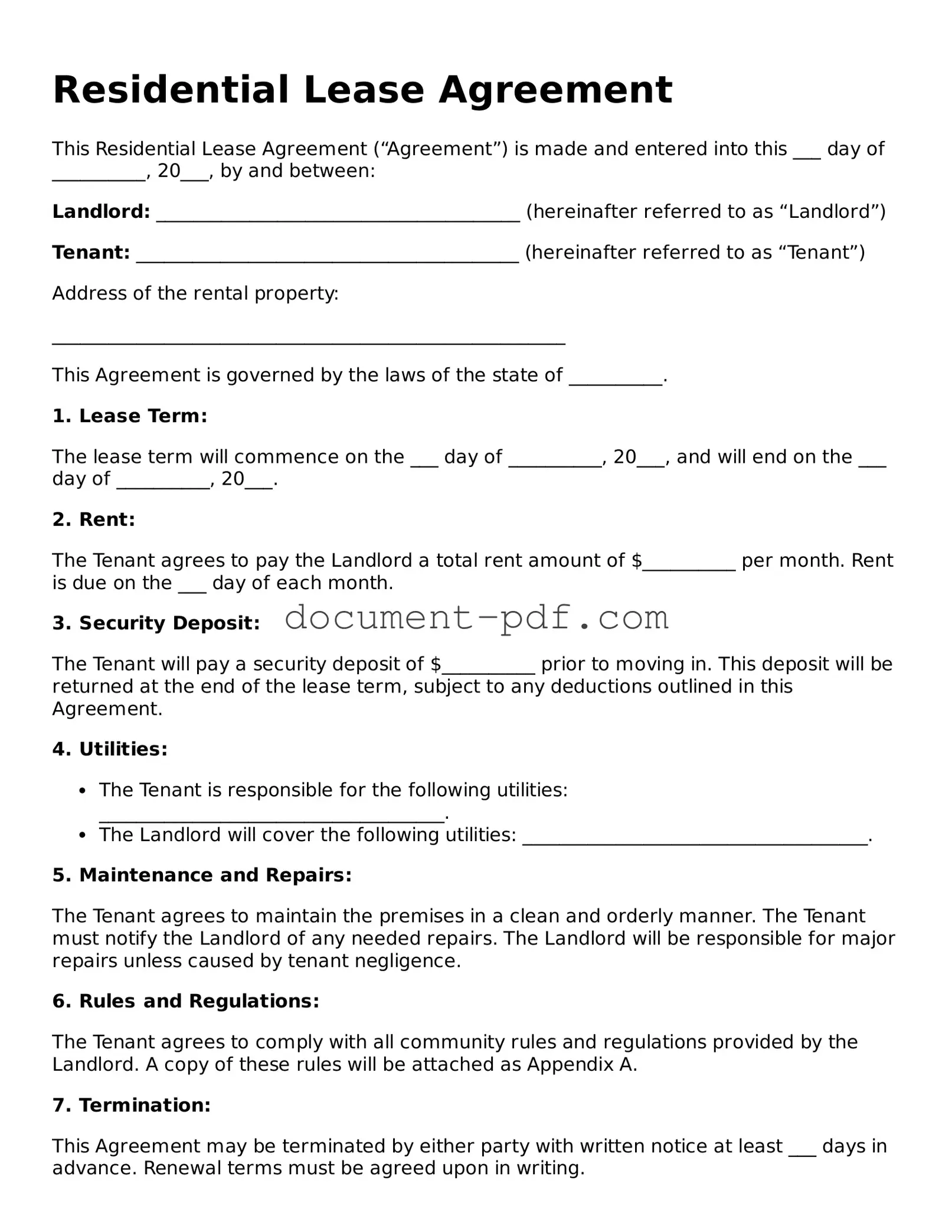Residential Lease Agreement
This Residential Lease Agreement (“Agreement”) is made and entered into this ___ day of __________, 20___, by and between:
Landlord: _______________________________________ (hereinafter referred to as “Landlord”)
Tenant: _________________________________________ (hereinafter referred to as “Tenant”)
Address of the rental property:
_______________________________________________________
This Agreement is governed by the laws of the state of __________.
1. Lease Term:
The lease term will commence on the ___ day of __________, 20___, and will end on the ___ day of __________, 20___.
2. Rent:
The Tenant agrees to pay the Landlord a total rent amount of $__________ per month. Rent is due on the ___ day of each month.
3. Security Deposit:
The Tenant will pay a security deposit of $__________ prior to moving in. This deposit will be returned at the end of the lease term, subject to any deductions outlined in this Agreement.
4. Utilities:
- The Tenant is responsible for the following utilities: _____________________________________.
- The Landlord will cover the following utilities: _____________________________________.
5. Maintenance and Repairs:
The Tenant agrees to maintain the premises in a clean and orderly manner. The Tenant must notify the Landlord of any needed repairs. The Landlord will be responsible for major repairs unless caused by tenant negligence.
6. Rules and Regulations:
The Tenant agrees to comply with all community rules and regulations provided by the Landlord. A copy of these rules will be attached as Appendix A.
7. Termination:
This Agreement may be terminated by either party with written notice at least ___ days in advance. Renewal terms must be agreed upon in writing.
8. Signatures:
In witness whereof, the parties hereto have executed this Lease Agreement as of the day and year first above written.
Landlord Signature: ____________________________ Date: _____________
Tenant Signature: _____________________________ Date: _____________
